Introduction
Football is celebrated for its drama, intensity, and moments of brilliance, but it’s also a physically demanding sport that can take a severe toll on the human body. While most injuries in football are minor, some have been so devastating that they’ve not only ended careers but also left a lasting imprint on the sport itself. This article explores the worst football injuries ever witnessed, detailing the stories behind them, their impact on players’ lives, and how they’ve influenced the evolution of football safety.
Understanding Football Injuries
Injuries are an unavoidable reality in football due to the sport’s fast pace, physical contact, and unpredictable gameplay. Whether it’s a sprained ankle or a fractured skull, the spectrum of football-related injuries is wide and sometimes tragic. Understanding these injuries requires an in-depth look into how they occur, what types are most common, and the risk factors involved. By identifying patterns and common causes, football authorities and medical professionals strive to prevent the worst outcomes.
The Nature of Football as a Contact Sport
Football is inherently a contact sport. Players frequently collide with one another while competing for the ball, executing tackles, or even unintentionally during set pieces like corners or free kicks. This level of physical engagement increases the risk of traumatic injuries such as concussions, broken bones, and torn ligaments. The combination of speed, strength, and high-stakes competition creates an environment where even a momentary lapse in judgment or timing can lead to catastrophic consequences.
Eduardo da Silva (Arsenal, 2008)
In February 2008, Arsenal striker Eduardo da Silva suffered one of the most graphic injuries ever broadcast live. During a Premier League match against Birmingham City, a reckless tackle from Martin Taylor resulted in a broken left fibula and a dislocated ankle. The image of Eduardo’s foot hanging at an unnatural angle shocked fans, players, and commentators alike. The injury kept him out of action for almost a year and significantly impacted his pace and agility upon return. While he eventually resumed playing, he never fully regained the form he showed prior to the injury.
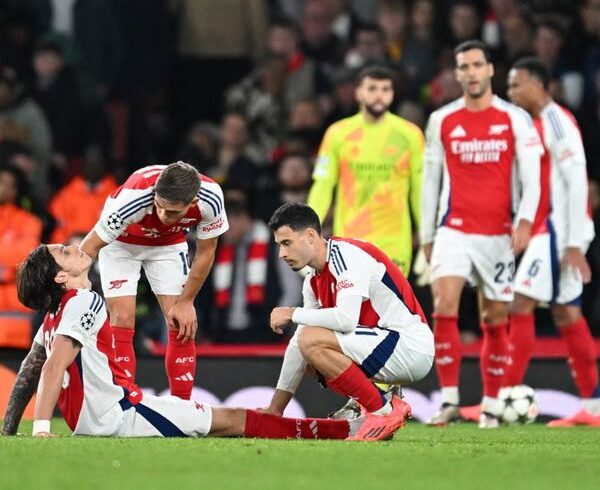
David Busst (Coventry City, 1996)
One of the most infamous injuries in football history occurred in 1996 when Coventry City defender David Busst collided with Manchester United’s Denis Irwin and Brian McClair during a corner kick. The impact shattered both the tibia and fibula in his right leg. The injury was so severe that Manchester United goalkeeper Peter Schmeichel reportedly vomited on the pitch. Busst underwent 26 operations and contracted a hospital-acquired infection, ultimately forcing him to retire just two months later at the age of 29. The incident remains one of the darkest moments ever seen on a football pitch.
Luke Shaw (Manchester United, 2015)
During a UEFA Champions League match against PSV Eindhoven in September 2015, Manchester United’s Luke Shaw was the victim of a double leg fracture after a tackle by Héctor Moreno. The sight of Shaw’s leg snapping during a marauding run down the left flank left teammates and fans horrified. Shaw missed over 300 days of football, and the recovery process was grueling both physically and mentally. However, unlike some others on this list, Shaw made a commendable return to top-level football and became a key figure in Manchester United’s defense and England’s national squad.
Djibril Cissé (France, 2004 & 2006)
French striker Djibril Cissé experienced two horrific leg breaks in the span of just two years. The first came in October 2004 while playing for Liverpool against Blackburn Rovers, when his tibia and fibula snapped after an awkward landing. Miraculously, he returned to football in just seven months. However, disaster struck again in 2006 during a warm-up match for the World Cup, when he broke his other leg. Cissé’s resilience and dedication allowed him to resume his career, but he never fully reached the peak that had once made him one of Europe’s most exciting forwards.
Petr Čech (Chelsea, 2006)
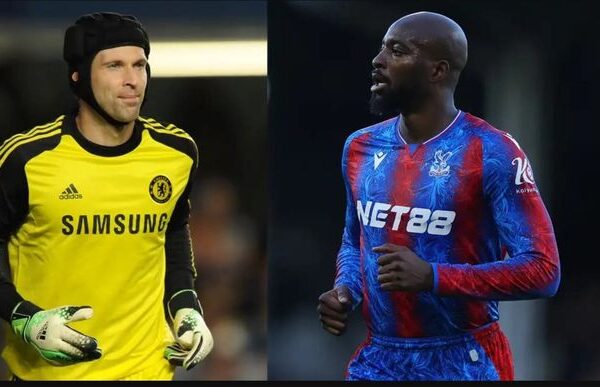
In October 2006, Chelsea goalkeeper Petr Čech suffered a life-threatening skull fracture during a match against Reading. A collision with Stephen Hunt in the opening minutes left Čech unconscious and required immediate surgery. The incident brought attention to the vulnerability of goalkeepers and the lack of protective measures at the time. Čech returned to the pitch wearing a now-iconic rugby-style protective helmet, which he wore for the rest of his career. His injury led to widespread changes in how head injuries were managed in football, including quicker medical response protocols.
Ryan Mason (Hull City, 2017)
Ryan Mason’s injury in January 2017 was one of the most terrifying in recent memory. The Hull City midfielder clashed heads with Chelsea’s Gary Cahill during a Premier League match, fracturing his skull and requiring emergency surgery. Mason spent over a year recovering, but was advised by doctors to retire at just 26 years old due to the risk of further brain injury. Following his retirement, Mason transitioned into coaching and later became the interim head coach of Tottenham Hotspur, earning admiration for his courage and leadership off the pitch.
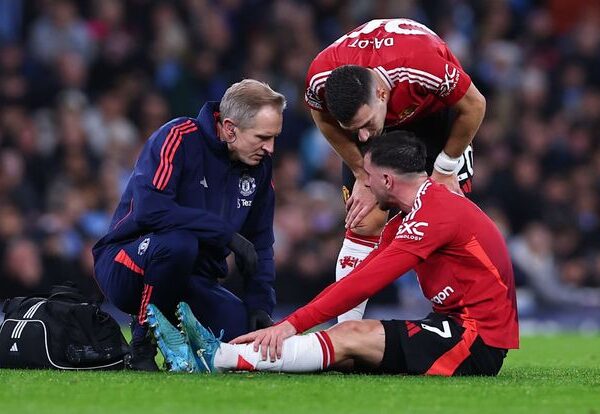
Aaron Ramsey (Arsenal, 2010)
In February 2010, Arsenal’s Aaron Ramsey suffered a gruesome double fracture to his tibia and fibula after a reckless challenge by Stoke City’s Ryan Shawcross. The incident immediately brought back memories of Eduardo da Silva’s similar injury just two years earlier. Ramsey spent nine months on the sidelines and faced intense physical and psychological hurdles. Remarkably, he returned stronger and became a key player for Arsenal, scoring two FA Cup-winning goals in 2014 and 2017. His resilience turned him into a symbol of determination and recovery.
Neymar Jr. (Brazil, 2014 World Cup)
During the 2014 FIFA World Cup quarterfinals, Brazil’s golden boy Neymar suffered a fractured vertebra after a knee to the back from Colombia’s Juan Camilo Zúñiga. The injury was so severe that doctors said he was just two centimeters away from being paralyzed. Neymar was ruled out of the tournament, and his absence proved catastrophic for Brazil, who lost 7–1 to Germany in the semifinal. The incident sparked international outrage and raised questions about refereeing standards and player protection in high-stakes matches.
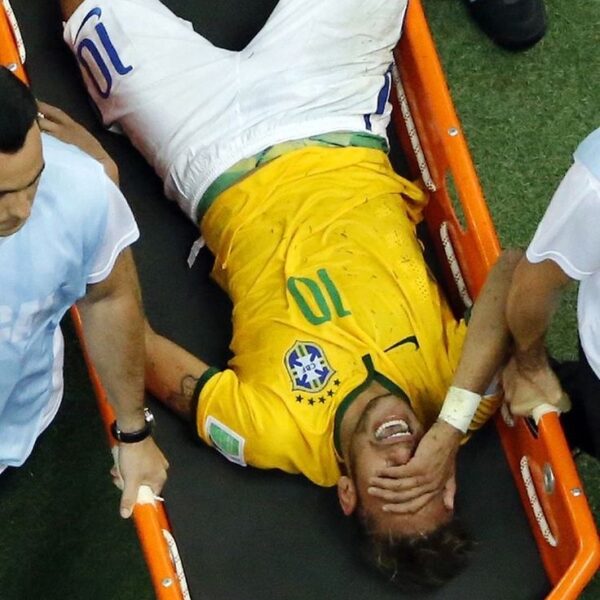
Marco van Basten (AC Milan, 1993)
Marco van Basten, one of the most gifted strikers in football history, saw his career prematurely end at just 28 due to chronic ankle injuries. Despite multiple surgeries and long rehabilitation efforts, van Basten could never recover the fitness required for top-level football. He officially retired in 1995, though his last match came in the 1993 Champions League final. His absence left a void in the game, and many football fans still wonder what more he could have achieved had he stayed healthy.
Fernando Torres (Atletico Madrid, 2017)
In March 2017, Spanish striker Fernando Torres suffered a frightening head injury during a La Liga match against Deportivo La Coruña. After an aerial collision, Torres fell unconscious and hit the ground with force, sparking immediate panic. Players from both teams urgently called for medical assistance as he lay motionless. Thankfully, he regained consciousness en route to the hospital and recovered swiftly, returning to play shortly after. The incident, though not career-ending, reminded everyone how quickly a routine play can turn dangerous.
How Football Has Changed to Prevent Injuries
The frequency and severity of football injuries have driven significant changes in the sport over the past two decades. Governing bodies like FIFA and UEFA have introduced a wide range of reforms to enhance player safety—from stricter enforcement of rules to improved match officiating. There’s also been a cultural shift toward prioritizing health over competitiveness, with more players and clubs willing to rest rather than risk aggravating injuries. These changes aim not only to protect players in the short term but to safeguard their long-term physical and mental health.
Advances in Sports Medicine
Modern sports medicine has transformed how injuries are diagnosed, treated, and rehabilitated in football. High-tech tools like MRI scans, performance analytics, and biomechanical assessments allow for early detection and better injury management. Treatment protocols have become more personalized, with multidisciplinary teams including physiotherapists, orthopedic surgeons, and sports psychologists. Additionally, rehabilitation has evolved from a passive process to an active one, with injured players undergoing tailored recovery programs that emphasize strength, mobility, and mental resilience.
VAR and Safer Refereeing

The introduction of Video Assistant Referee (VAR) technology has played a pivotal role in enhancing player safety. By allowing referees to review potentially dangerous tackles and off-the-ball incidents, VAR has significantly reduced the number of missed fouls that could lead to injury. While controversial at times, the system has contributed to a decline in reckless challenges and improved accountability among players. The presence of VAR acts as a deterrent, encouraging safer play and upholding the integrity of the game.
Improved Protective Gear
Advancements in protective equipment have helped mitigate the risk of injury in football. Lightweight yet durable shin guards, ankle braces, and compression gear provide support and absorb impact. Goalkeepers now wear gloves with enhanced grip and wrist protection, while players like Petr Čech have popularized headgear to prevent recurring head trauma. Research is ongoing into smart fabrics and wearable tech that can monitor physiological data in real time, potentially identifying signs of stress or fatigue before injuries occur.
FIFA and UEFA Safety Protocols
In response to growing concerns over player health, both FIFA and UEFA have implemented robust safety protocols. These include mandatory concussion assessments, stricter return-to-play guidelines, and minimum medical requirements for professional clubs. Teams must now have certified medical staff on hand at all matches, and referees are trained to stop play immediately for suspected injuries. These measures have helped create a more structured and responsive environment where injuries are handled with the seriousness they deserve.
The Role of Mental Health After Injury
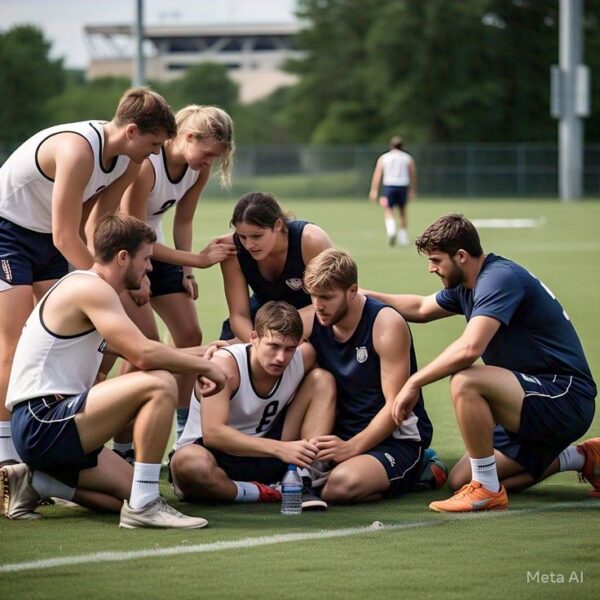
While physical recovery often dominates the conversation around football injuries, mental health is an equally important aspect. Athletes not only deal with pain and physical limitations but also face fear, anxiety, and the pressure of returning to form. The trauma of a serious injury can lead to depression, identity loss, or even PTSD. Modern football is increasingly recognizing the importance of addressing mental health as part of the recovery journey, making psychological care a standard part of rehabilitation.
Psychological Impact of Long-Term Injuries
Long-term injuries can severely affect a player’s confidence and motivation. Being sidelined for months or even years disrupts rhythm, routine, and the athlete’s connection to the team. Players often struggle with watching their peers compete while they are isolated in recovery. This emotional toll can be as debilitating as the physical damage. Clubs now employ sports psychologists to help injured players cope, manage expectations, and mentally prepare for the demands of professional return.
Importance of Support Systems
A strong support system is crucial for any footballer facing a significant injury. Family, teammates, medical staff, and coaches all play a role in recovery. Encouragement, understanding, and continuous communication can help the player remain mentally engaged and motivated. Clubs that foster a supportive environment not only enhance recovery outcomes but also strengthen team unity. Footballers often cite emotional support as one of the key reasons they were able to return to the pitch with renewed determination.
Mental Resilience in Elite Footballers
Recovering from a devastating injury requires extraordinary mental toughness. Elite footballers often showcase remarkable resilience, pushing through excruciating rehab sessions, public scrutiny, and personal doubt. This inner strength often stems from a deep-rooted passion for the game and the support of those around them. Stories like those of Aaron Ramsey, Luke Shaw, and Petr Čech exemplify how mental resilience can turn a traumatic experience into a comeback story, inspiring teammates and fans alike.
Lessons Learned from These Incidents
The worst football injuries have served as powerful catalysts for change. From improving pitch-side medical responses to enforcing stricter rules on dangerous play, each incident has contributed to making the sport safer. There’s a greater emphasis now on proactive measures, such as monitoring player fatigue, implementing concussion protocols, and enhancing injury prevention training. These lessons underscore the importance of treating injuries as both physical and psychological events that require comprehensive care.
Conclusion
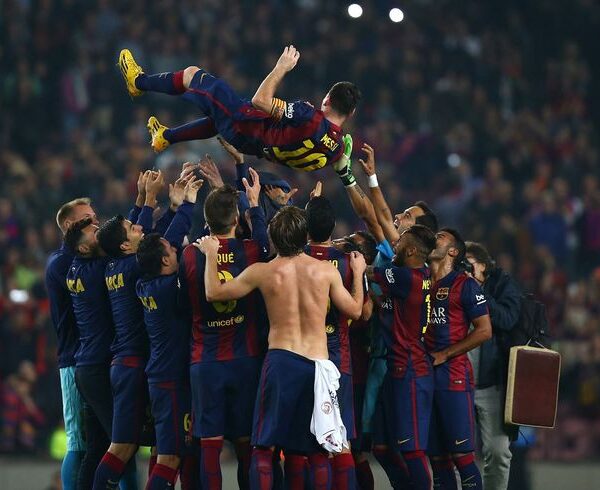
Football is a sport of passion, glory, and physical grit—but it’s also one where careers can be altered in a split second. The worst football injuries in history have not only shocked the world but also reshaped how the sport views safety, recovery, and long-term well-being. These painful moments have led to advancements in sports medicine, rule enforcement, and player care. Most importantly, they remind us that behind every superstar is a vulnerable human being who deserves protection, respect, and support on and off the field.

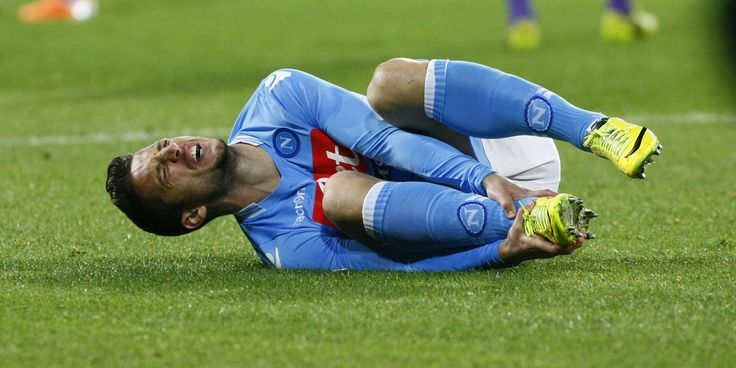

0 responses to “The Worst Football Injuries in History: Shocking Moments That Shook the Sport”